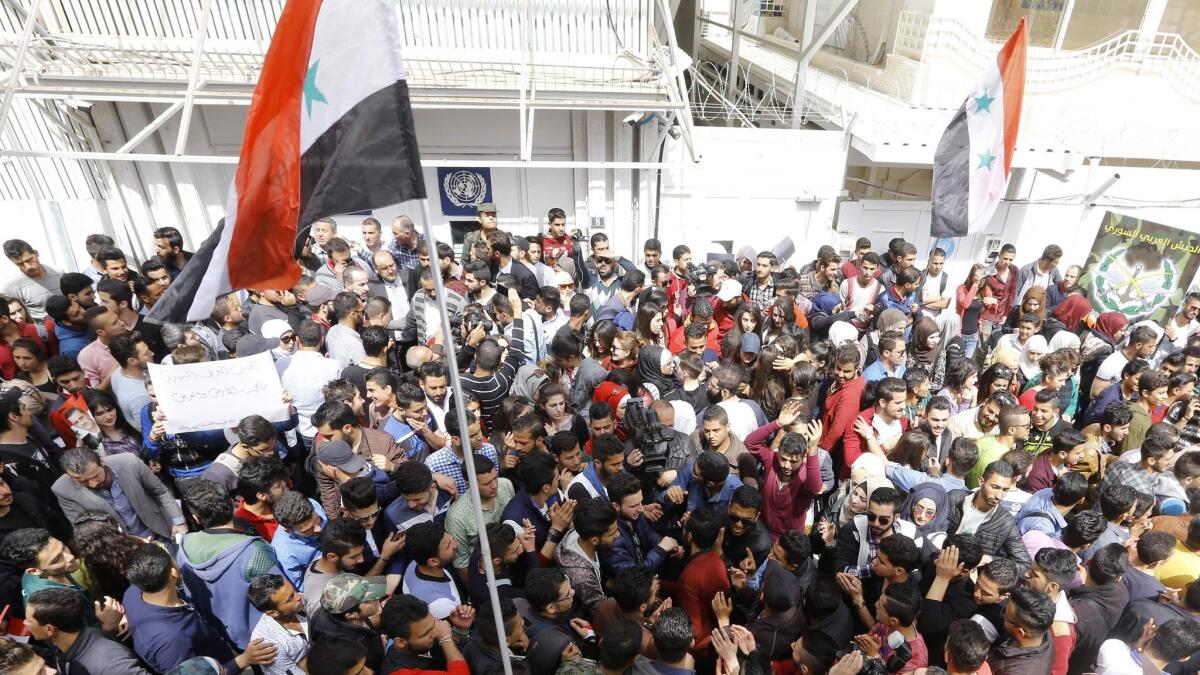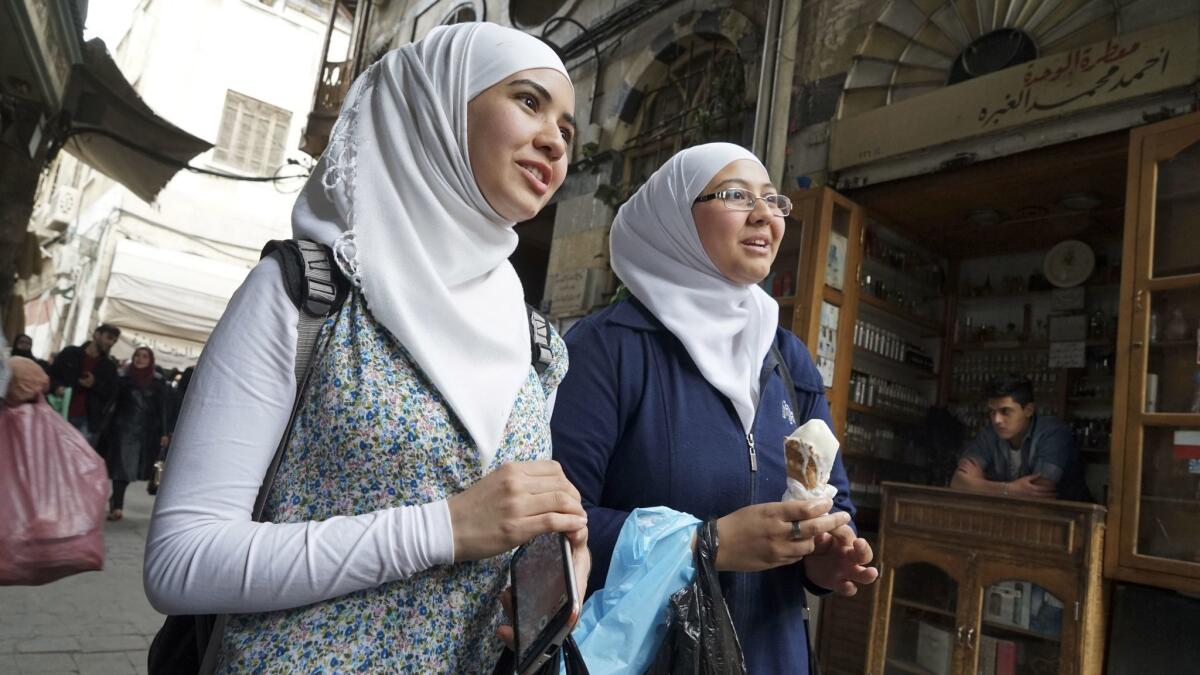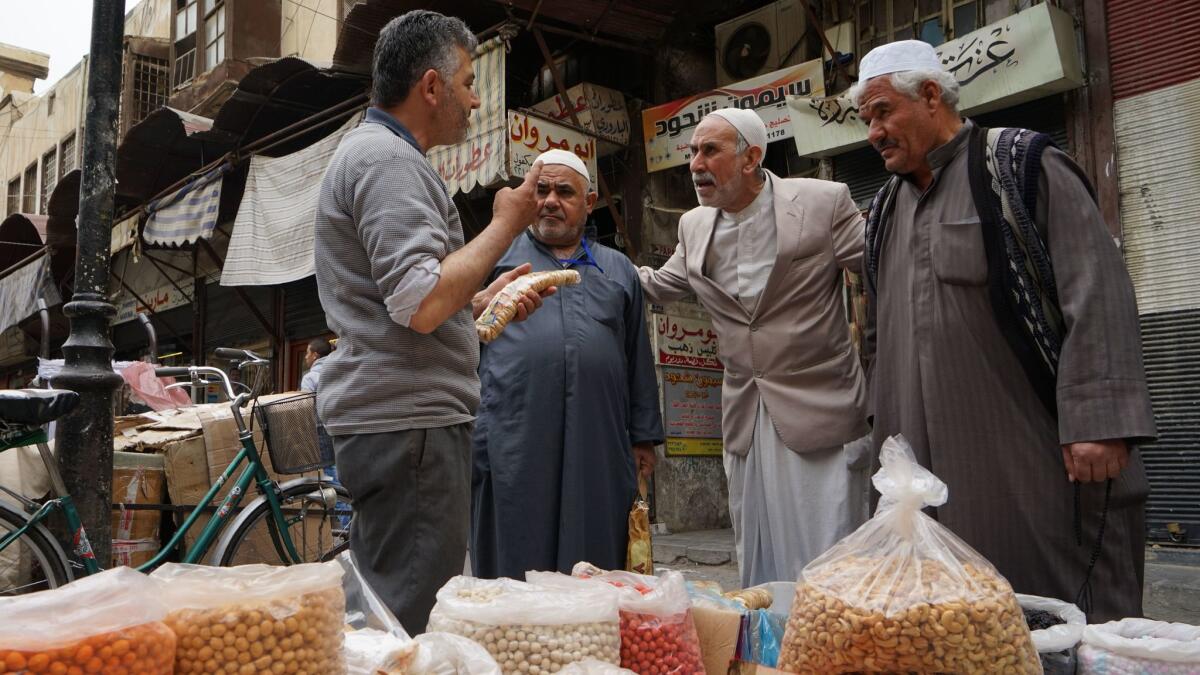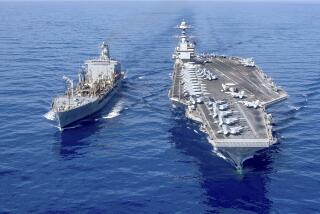Pressure grows for Assad to step down. But in Damascus, his backers say the alternatives may be worse

From his shop window, looking out on the storied Umayyad mosque and the remains of a 2,000-year-old Roman bath complex, Joseph Havera was contemplating what he considered a nightmare scenario: A U.S.-led assault on the Syrian capital, stronghold of President Bashar Assad.
“Why would the United States attack Syria? I don’t understand it,” Havera, an august merchant of textiles, antiquities and other Syrian handicrafts, said from his musty second-floor aerie, up a series of narrow stairways that wind past sundry craftsmen’s workshops.
“I knew this Trump liked women,” Havera added. “But it seems he likes bombs too.”

In the wake of a U.S. missile strike on a Syrian airbase last week, word of Washington’s newly aggressive posture toward Assad’s government has rippled through the cobbled alleys of the Old City, where serpentine lanes run past Roman-era colonnades, spice emporia and storefronts crammed with Damascus-steel daggers and intricately inlaid wooden boxes.
The prospect of a wider U.S. intervention has unnerved many in this bastion of support for Assad, whom Trump referred to on Wednesday as “an evil person” and “an animal.”
Assad’s response has been to defiantly dig in. Earlier this week, chanting demonstrators massed outside the U.N. office in Damascus, protesting the “unjust American aggression” against Syria. “The Iraqi scenario will not be repeated in Syria,” read one banner, referring to the 2003 U.S. invasion of Iraq that followed accusations — unfounded, as it turned out — that Saddam Hussein’s government was harboring weapons of mass destruction.
After more than six grueling years of war, this ancient capital has regained a sense of equilibrium, despite the daily soundtrack of not-so-distant mortar strikes — hollow thuds that hardly draw notice anymore in this sprawling metropolis that is home to more than 5 million people.
Life has resumed a sense of normalcy, a notion that may stun those who have followed news reports of Syria’s civil war but haven’t been to Damascus lately. Traffic clogs the streets and shoppers browse the souks, making time for an Arabic coffee or an ice cream from the celebrated Bakdash ice cream parlor in the Hamidiya souk. In one corner of the city, Damascenes can even be seen taking part in wedding festivities.
Residents have become accustomed to the checkpoints, concrete blast barriers and robust army presence in the streets. The heavy security has generally been successful in reducing the car-bomb attacks that racked the capital in the early months of the war and drove people from the streets. Now, the Old City is alive at night again. Bars are hopping in Bab Touma, a largely Christian district.
Many Damascenes have even allowed themselves to contemplate an end to the shattering conflict.
But the U.S. attack last week has added an unsettling new element that complicates any forecast for a resolution. Washington has long provided arms and training to anti-Assad rebels, but never overtly intervened against Assad’s government — until last week.
The Trump administration called the strike a retaliation for a Syrian government chemical attack on a rebel-held town in northwest Idlib province. Damascus and its main allies, Russia and Iran, have denied that the government was responsible, suggesting the poison gas was inadvertently released during an air strike on a munitions depot, or planted by the opposition to draw the United States into the war.
To many here, especially Christians, other minorities and secular Sunni Muslims, the Assad government — widely reviled in the West — has become a bulwark against an insurgency that has come to be largely dominated by hard-core Islamists. Government supporters may not like Assad, but they see his leadership as a barrier against an array of hard-line opposition fighters whom many consider just as threatening as Islamic State, the ultra-radical group that until now has been the main target of U.S. military might in Syria.
While Assad’s forces have tight control of the capital, armed opposition factions still control suburbs just a few miles from the city. Everyone is aware that the current sense of stability could be transitory.
“Our spirit isn’t very high right now,” said Ghina Allain, 20, who was strolling through the ancient Souk al-Silah with her sister, Hannah Allain, 18. “What does Trump know about our country? Who is he to do this?”

Of course, there are many Syrians who have long called for a U.S.-led military effort to oust Assad’s autocratic government. Various opposition groups applauded the Trump administration strike, saying it was long overdue. But no one would express such sentiments publicly on Damascus’ closely patrolled streets.
Instead, most expressed disdain for the United States.
“We know that the Americans are working with the Saudis and with Daesh,” said Mahal Ghanem, a snack seller in the Old City, using an Arab acronym for Islamic State. The United States and Saudi Arabia, he said, have long been arming anti-Assad forces, though Washington and Riyadh deny aiding Islamic State. “This is nothing new,” he said. “They will be defeated.”
Early on in the conflict, the government concentrated its forces on consolidating control of the capital, maintaining its base of support on the Mediterranean coast and recapturing the cities of Homs and Aleppo.

That strategy has resulted in a huge loss of life among pro-government forces but has thus far proved successful — thanks in large part to aid from Russia, Iran and Hezbollah, the Lebanese group closely tied to Iran. Government supporters are unapologetic about the outside aid, often denounced in the West and among opposition activists.
“Yes, Russia helped save our Syria, and we are grateful,” said Nidal Mahmoud, 47, a clerk from Homs who was sipping coffee in a to-go cup on an Old City street. “What would we have done without them? Syria would have been lost.”
The Old City, one of the historic jewels of the Middle East, has remained intact even as the ancient centers of Aleppo and Homs were destroyed in the fighting. It remains a place where people can come and put the war aside.

After more than six years of war, life in Damascus has returned to a semblance of normality, though the sounds of mortars still echo in the Syrian capital and armed rebels remain entrenched a few miles from the city limits. But it’s spring and weddi
“Many of our customers have lost loved ones in the war, they have suffered a great loss,” noted Ahmad Hussein Abd, manager of the landmark Nawfara coffee and tea house, where clouds of smoke from water pipes drift over the patio. “But here they can have some peace, some time to be quiet and be happy. Here, we don’t talk politics.”
There seems, in general, a reluctance to pass judgment. This is, after all, a conflict that has yet to be settled conclusively.
“In the end, God will always save Syria,” said Yusuf Kanavid, a stout rug salesman sitting on a plastic chair outside his shop. “Syria will always survive. God is with us.”
Twitter: @mcdneville
ALSO
A 17-year-old Syrian who fled Aleppo is feared drowned in San Diego after his first trip to a beach
White House calls Russian denials on Syrian gas attack a ‘coverup’
U.S. and Russia remain far apart on Syria after Tillerson meets with Putin and other officials
More to Read
Start your day right
Sign up for Essential California for news, features and recommendations from the L.A. Times and beyond in your inbox six days a week.
You may occasionally receive promotional content from the Los Angeles Times.






